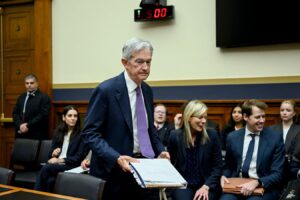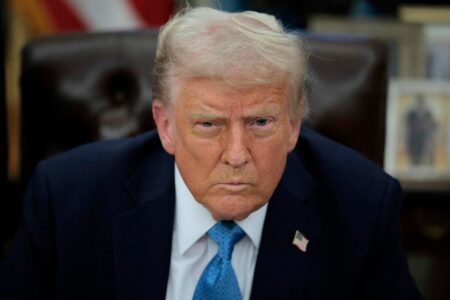Sam Silverman is the Managing Partner of EB5AN—a national EB-5 visa firm with 2,300+ foreign investors from 60+ countries.
One of the most significant amendments made to the employment-based fifth preference visa, known as the EB-5 investor visa, under the EB-5 Reform and Integrity Act of 2022 was the introduction of reserved set-aside visa categories.
The idea was to encourage investments in projects that align with the U.S. government’s economic development priorities, particularly in underserved regions called targeted employment areas, or TEAs. At the same time, by carving out a total of 32% reserved quota within the annual EB-5 visa allowance, the RIA promised new investors a faster immigration experience free from the existing backlogs.
In this article, I aim to share my perspective on reserved visa availability and help potential investors arrive at informed conclusions. As the managing partner of an EB-5 firm, I can confirm that there are robust offerings in each category with their unique pros and cons. As I see it, when it comes to processing times and future backlogs, the rural category has an edge, though the urban high-unemployment category may also suit specific investors.
The Impact Of RIA Legislation On TEA Investments
The new legislation allocated the largest reserved visa share, 20%, to rural TEA investments; followed by a 10% share for investments in high-unemployment areas, also called “HUAs” or “urban” TEAs; and a smaller 2% share for specific infrastructure projects. The RIA also introduced priority processing for rural petitions, which played a key role in enhancing investor interest in rural TEA projects.
In the months following the RIA, which was passed in March 2022, thousands of investors took advantage of the set-aside visas and priority processing, and at my firm, we worked with multiple investors who received their green cards in less than a year. The majority of applications came from China and India, the two countries with the highest demand in the EB-5 market, according to a data analysis report by Invest in the USA. (Full disclosure: My company contributed to this report.)
Due to limited annual visa supply and a 7% per-country cap, I saw some countries with a long line of pre-RIA investors waiting to obtain their green cards. Therefore, for new investors, the reserved quota is an opportunity to sidestep the long queue and speed up their immigration journey.
But from my perspective, the IIUSA report pointed toward the potential for backlogs in the reserved categories as well, particularly in the high-unemployment TEA category.
I-526E Filing Data Insights
The IIUSA report showed that from fiscal year 2022 through July 2024, China and India have dominated post-RIA filings, accounting for nearly 71% of the applications. Out of the total 6,506 I-526 and I-526E applications filed through July 5, 2024, 3,300 (almost 51%) were from China; 1,341 (20%) were from India and the remaining were from other countries.
Category-wise, between 2022 and 2024, 3,435 petitions were filed in the high-unemployment category and 2,281 in the rural category, with only 777 petitions filed in an unreserved or unknown category. Thirteen were filed as both rural and HUA.
These statistics indicate that, since 2022, more than half of the investors (nearly 53%) have chosen urban TEA investments, most of whom are Chinese and Indian nationals. Data also shows that the rate of filings has increased sharply from FY2022 to July 2024, and investors are now noticeably inclining toward rural investments.
EB-5 Set-Aside Visa Demand Vs. Availability
Given the above data and considering an average requirement of around 2.5 to 3 visas per investor (accounting for the family of the primary applicant), the estimated demand in the urban category comes to about 8,500 visas if you multiply 2.5 by 3,435 urban petitions. Likewise, approximately 5,700 visas are required in the rural category.
Generally, the annual EB-5 visa availability is around 10,000 visas, of which the urban category receives about 1,000 (10%) visas and the rural category gets 2,000 (20%) visas. In FY2025, IIUSA estimated we could also have roughly 1,100 urban and 2,200 rural carry-over visas from FY2024. So, the total availability could add up to around 2,100 visas for urban investors and 4,200 visas for rural investors.
As we can see, based on these numbers, the supply-demand gap in the urban category could be quite high at approximately 6,400 visas. Comparatively, the rural category could have a shortage of just about 1,500 visas, which is less than a year’s worth of the reserved rural quota.
What this means is that even if a backlog does occur in the rural category, it would likely not last for more than a year. In contrast, the urban category is highly oversubscribed, and, based on current projections, I believe the insufficient supply of visas could translate into multiyear wait times for Chinese and Indian applicants.
Considerations For Investors
My advice to potential EB-5 investors considering a TEA investment would be to evaluate the above facts before committing to an offering. I believe a sizeable backlog is likely in the urban category.
The potential reserved category backlogs might not affect investors born in lower-demand EB-5 countries who already reside in the U.S. on a valid status. They could still prefer urban TEA investments despite the longer wait. That’s because they can use the EB-5 concurrent filing option to access most green card benefits, even while their applications are being processed.
For applicants who don’t reside in the U.S., keep in mind that switching from one project category to another within the same EB-5 application isn’t feasible, so it’s crucial to make informed decisions before beginning the EB-5 process. My advice is to consult with an experienced immigration attorney and collaborate with a reputable regional center. These professionals can provide tailored advice based on an investor’s country of chargeability, risk tolerance, investment preferences and other individual circumstances.
In conclusion, except for China and India, citizens of other countries likely do not need to worry about visa availability and could select any suitable rural or urban TEA project. However, applicants from China and India applicants could consider low-risk rural TEA investments, which may offer shorter wait times compared to urban projects.
The information provided here is not investment, tax or financial advice. You should consult with a licensed professional for advice concerning your specific situation.
Forbes Business Council is the foremost growth and networking organization for business owners and leaders. Do I qualify?
Read the full article here











